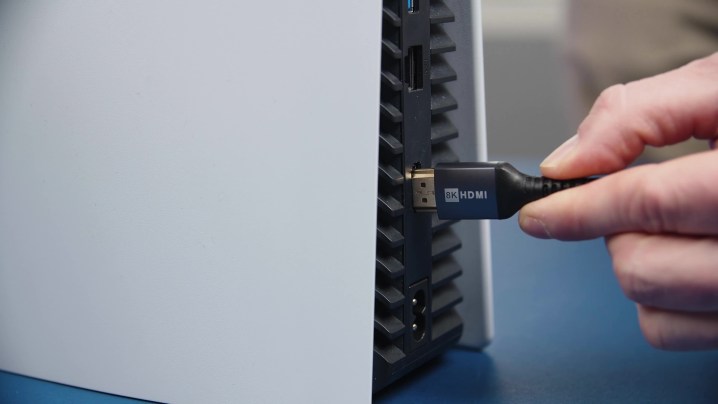Officially announced in CES 2025, HDMI 2.2 is the next generation HDMI standard that promises to double the bandwidth available for high resolution and refresh rate support, and will require a new cable to support these new standards. It will also bring modern features with its Evolution and Video Sync with its devices.
But the new cable is not coming until the end of this year, and there are still no signs of TV supporting new standards. Everything you need to know about HDMI 2.2.
HDMI 2.2 What can you do?
The standout feature of HDMI 2.2 is that the existing ultra -high -speed HDMI cables are allowed to double the bandwidth using the HDMI 2.1 protocol. HDMI 2.2 has been ranked up to 96 GBPS, which has begun supporting 16k resolution support without any compression, or 4K 240Hz without compression. Throw the DSC and it should help monitor up to 4k 480Hz or 8K in more than 120 hits.
Although there are currently no user TV or monitors who currently support such resolutions and refresh rates, it may be that the protocol is used in the future and used in virtual reality headset.
The HDMI will also support the 2.2 Lativity Indicator Protocol (LIP), which will help ensure that the audio has been compatible with the video, especially in the configurations that include the external A/V system.

You will need to use a new HDMI 2.2 certified ultra -96 cable design to support new resolutions and refresh rates. The new cables will be compatible backwards with all previous HDMI version, but it will only run at the maximum supported speed of the lowest link in China. So a HDMI 2.2 cable is a plug in a port that is only compatible with HDMI 2.0 speed and will not be able to use the full bandwidth of the cable.
HDMI 2.2 vs HDMI 2.1
HDMI was a great innovation for the 2.1 HDMI standard when it was verified in 2017, but it was only in 2020 and 2021 when we started to see real products using the design. It increased the HDMI 2.0 bandout almost three times, and eventually enabled HDMI to 4k 120Hz support, which was very important for this latest generation of sports consoles.
HDMI 2.1 also introduced a range of new features. They include:
- Dynamic HDR Support.
- Stream compression 1.2 Support Display.
- Improved audio Return Channel (ERC) support.
- Variable refresh rate
- Quick media switching.
- Quick frame transport.
- Auto -Latency Mode.

HDMI is very light on 2.2 features, just introduces a new lip protocol, but will still use it to use it. Like HDMI 2.1, though, HDMI 2.2’s bandout uplift is dramatic, and is really the largest in standard history by gigbits per second. HDMI 2.1 doubled from 48GBPS to 96GBPS makes HDMI 2.2 highly qualified video and audio transmission standards, even eclipse display port 2.1 and USB4, both can reach only 80 GBPS.
However, it is also weaker than the new standard outside China, known as GPMI.
HDMI 2.2 When is available?
HDMI 2.2 was officially unveiled in January 2025, and will be formally launched in the first half of the year. The HDMI Forum, which manages its ongoing development, has suggested that the new Ultra 96 cables will be released before the end of the year, but we cannot see HDMI 2.2 -supporting devices in 2026 who support HDMI 2.2 in 2026.
This too is hope. HDMI 2.1 was confirmed and launched in 2017, but it was not up to 2020/2021, where we started to see the display with full use. HDMI 2.2 theory can take even more time.
At the time of writing, there is no great call for a more sophisticated cable quality in the residential room. Although PC Gaming’s high resolution and refresh rate gaming is possible for high bandwidth cables, but most of the high-end PC 4K are not managing 200+ FPS on 4K-and they have any display port 2.1 support. In fact, most still play on fewer resolutions. While living in the room, 120 hertz has the standard of 4K big sports consoles. Without a new generation of Xbox or PlayStation to run up to TV refresh rates, it doesn’t have much benefit to support more.

There are 8k TVs that can offer 120 hez and more refresh rate, but games consoles and TVs cannot manage it, so, then, a little benefit. There is also no plans for 8K Blue rays that can use additional bandwidth for high -bit rate video or more HDR metadata.
HDMI 2.2 may have the future of connecting all kinds of devices and has bandits and features to cope with the best alternatives, but it is likely that some time will not be included in the mainstream.






